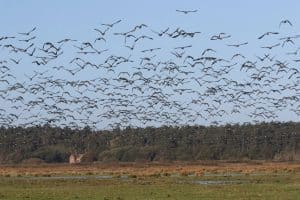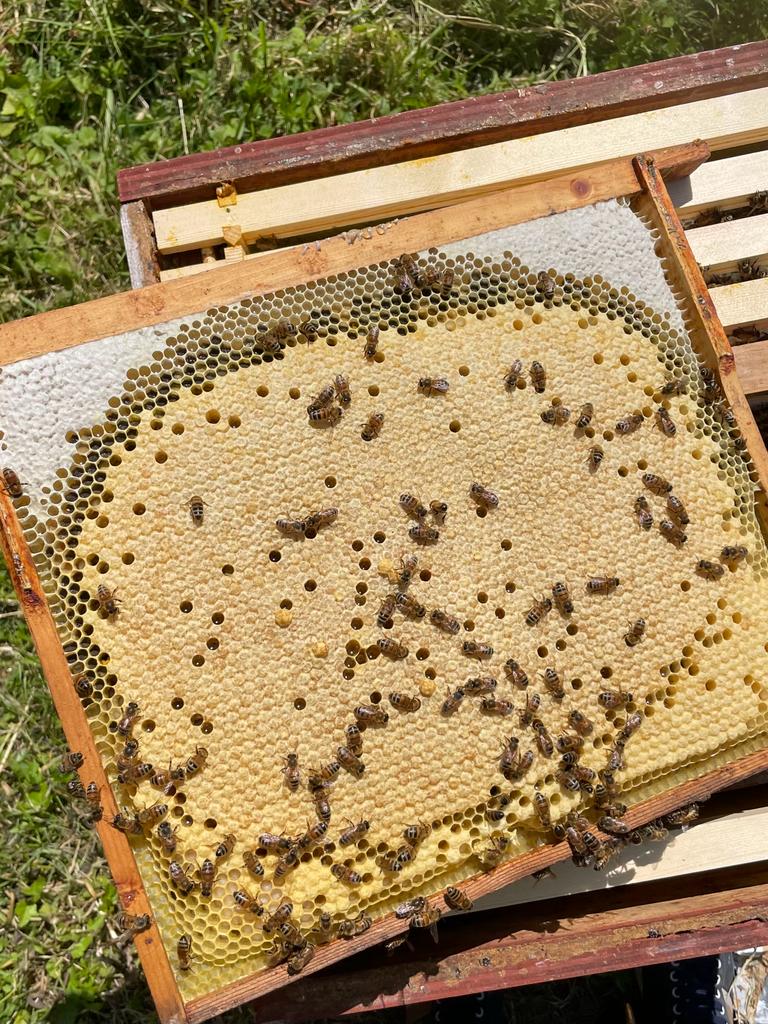
What’s the buzz?
July 5, 2023 | Nature news | 4 minute read
If you head to Pinewoods over the coming weeks, you might hear a few more ‘buzzes’ than usual! Catherine Leach, a gamekeeper at Holkham, is a hobby beekeeper too, and has brought some bees down to Pinewoods whilst the sea lavender is out, to help pollinate it! This is on the wildlife area adjacent to Beach Road, and the hives will be fenced off, so the bees will buzzing around out of your way – don’t worry!
Catherine has shared some fascinating information below, so if you’d like to bee more knowledgeable about these creatures, have a read.
In the hive
Bees are fascinating creatures that play a vital role in our ecosystem. Inside a beehive, a bustling community thrives, consisting of three types of bees: the Queen, the Workers, and the Drones. Each bee has its unique characteristics and responsibilities, contributing to the overall functioning and success of the hive. Let’s explore what each of these bees do.
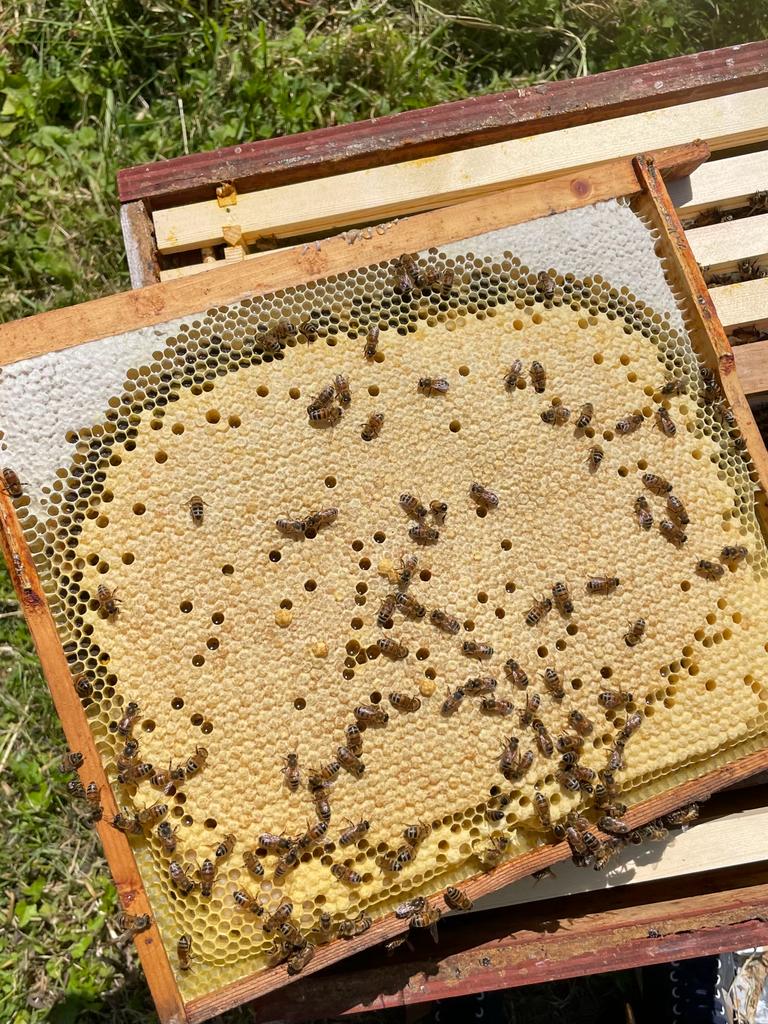
A frame from inside the hive.
The Queen
In every beehive, there reigns a single Queen bee, who is the only fertile bee within the hive. With an astonishing capacity, the Queen can lay over 2,000 eggs per day at her peak, surpassing her own body weight. This ensures the continuous growth of the hive, potentially reaching a population of up to 50,000 bees. However, the Queen’s sting is reserved solely for defence against rival Queens Surrounded by attendant bees, the Queen receives unwavering care and sustenance, allowing her to live up to an impressive five years.
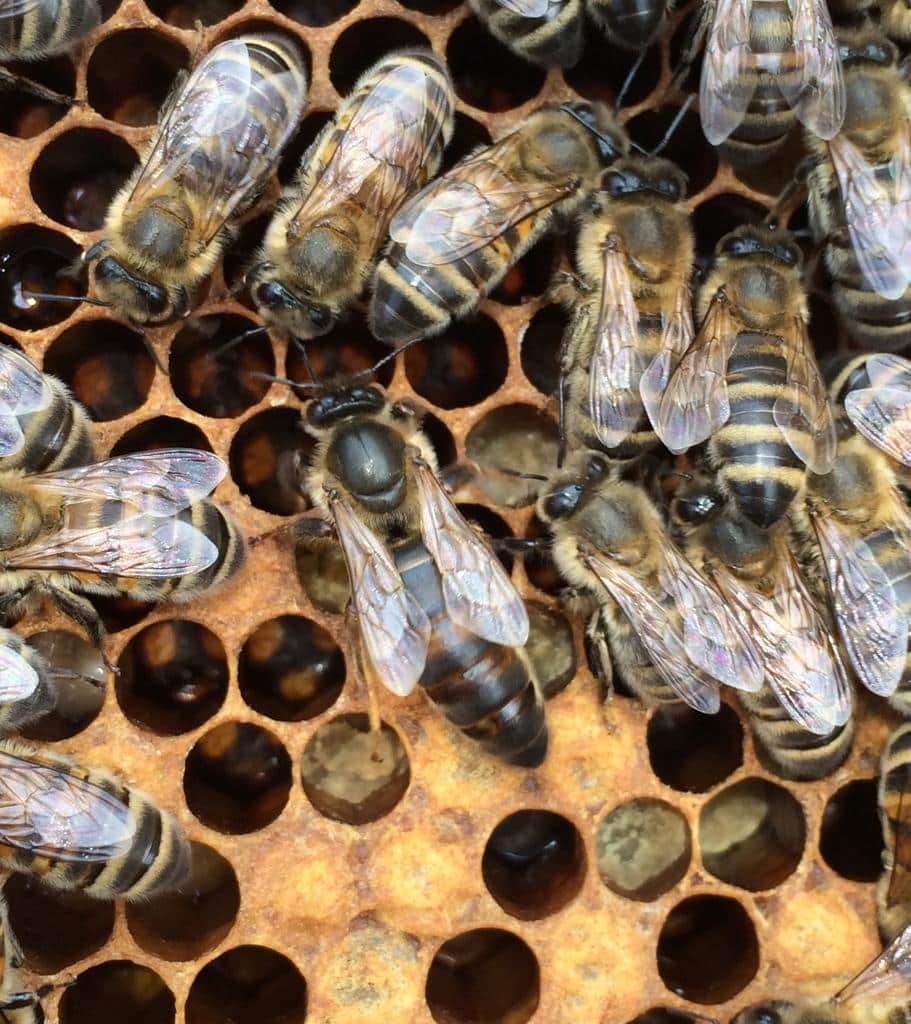
The Queen is in the centre, surrounded by workers
Workers
The backbone of the beehive, the workers, are all female bees. Unlike the Queen, they are infertile. They fulfil many duties throughout their lives.
During a worker bee’s life, her job role changes as she ages. She will begin as a cleaner, starting with the cell she hatched from. As they mature, worker bees’ duties shift, and they ultimately become foragers, gathering nectar, pollen, water, and propolis, commonly known as “bee glue.”
In the summer, worker bees typically live for about six weeks due to their demanding workload! Conversely, during winter, they can survive up to six months, as they don’t leave the hive very often. Worker bees’ stings are barbed, meaning they can sting only once and then will die.
Did you know that throughout a worker bee’s entire lifespan, she collects only about 1/12th of a teaspoon of honey?
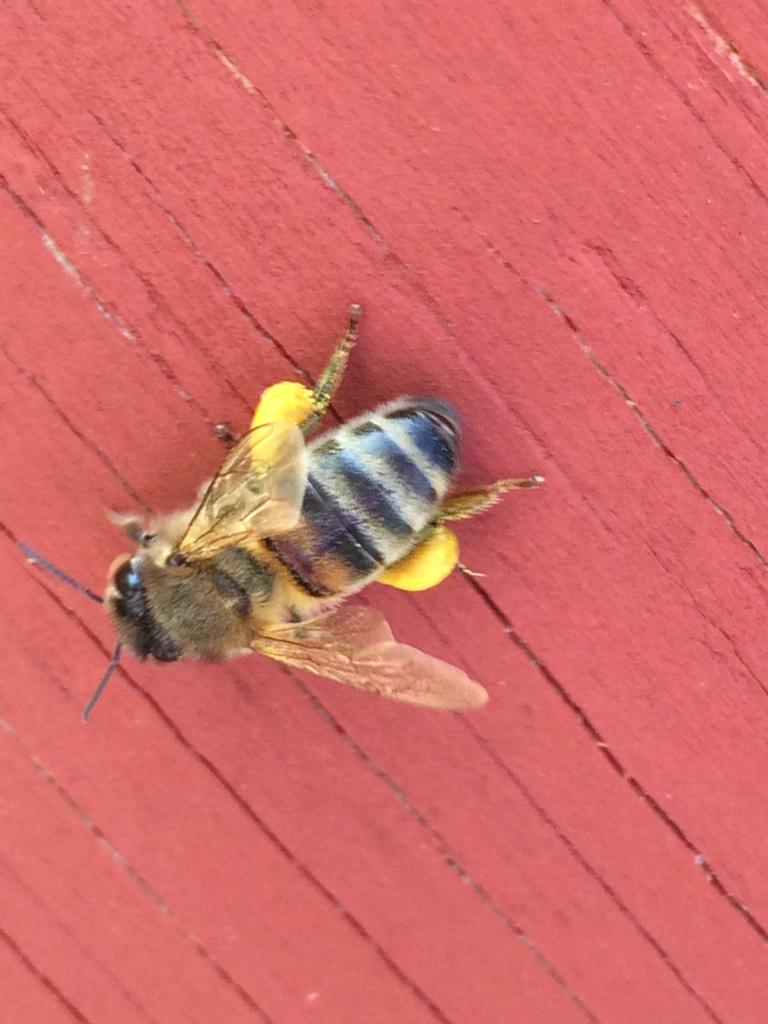
A worker bee returning to the hive, carrying pollen on its legs
Drones
The male bees in the colony are known as drones. Unlike most creatures in the animal kingdom, drones do not have a father; they are born from infertile eggs. Drones do nothing to help in the hive and are quite a burden on resources in the colony, but they essential to spread their genetics to future generations.
Their sole mission in life is to mate with a virgin Queen. Once the breeding season ends, drones are kicked out of the colony and die. They also die after they mate with a new Queen bee!
Drones are harmless and do not have a sting. Their lifespan ranges from seven to eight weeks, and they are exclusively found in the colony during the summer months.
Extra facts (for you to ‘drone’ on about!)
Honey bees are responsible for an astounding 80% of plant pollination. Without their crucial role, the foods available in our supermarkets would look very different!
Honey bees will fly up to three miles to find forage to keep the hive going. If you were to add together all the miles the bees travel in a strong colony in a single day, it could be as far as earth to the moon and back
Bees can achieve speeds of up to 20 miles per hour while foraging. However, their return journey, laden with nectar, slows them down to approximately 12 miles per hour.
Honey bees adopt a unique strategy to survive winter. Instead of hibernating, they form a cluster within the hive and generate heat by vibrating their wings. This is why they store honey to eat during the winter.
Back to Journal Back to Journal

